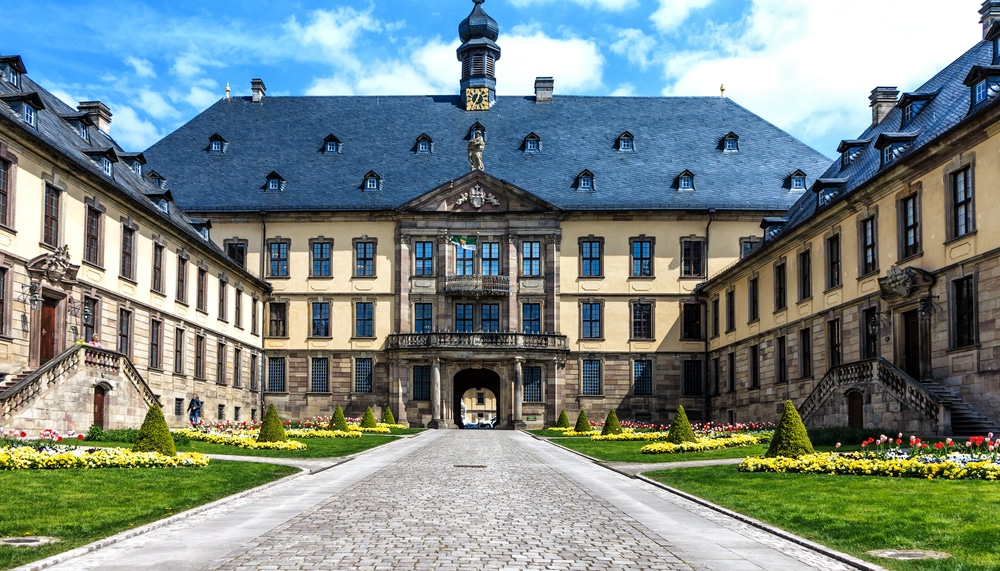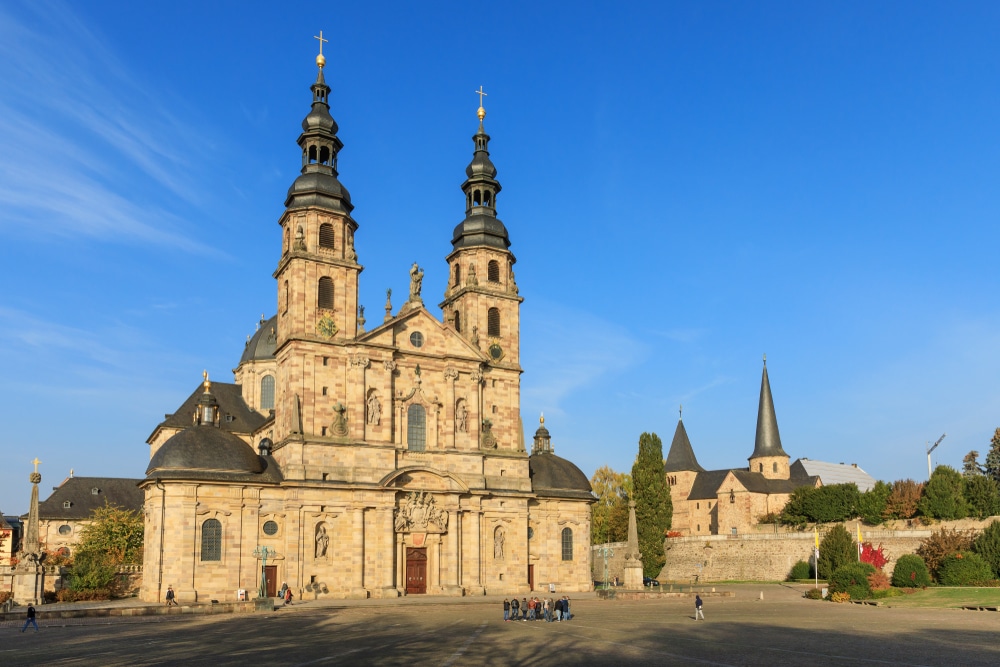Fulda City Palace
Among the royal legacies of an earlier era, the baroque city palace in Fulda occupies a special place. Among the numerous historical buildings and the churches, palaces and parks worth seeing in this city, the residence of the prince bishops forms a radiant centre. A tour of the city palace takes the visitor back to the days of everyday court life. Today, parts of the extensive complex house exhibits and administrative rooms.

Summer residence of the prince bishop
In 1735 the Prince-Abbot of Dalberg afforded himself a small country castle on the Fulda. It has been preserved and is located in the middle of the two onion towers. But after only a short period of time, Amand von Buseck, the later Prince-Bishop of Fulda, also discovered the charm and idyllic location of this hitherto rather insignificant building and commissioned the Swiss-born master builder Andrea Gallasini to convert it into a summer residence. Gallasini had acquired the reputation of an ingenious architect and was to leave his mark on the city of Fulda with secular buildings in the following years.
The owners changed constantly
Little by little, the small castle was transformed into a complex that was unparalleled in the region. It included, among other things, farm buildings and a three-sided courtyard of honour. The exterior features of the town castle were the hipped roofs on the two- or three-storey flanks. Difficult times began in 1802 with the secularisation, because from then on there were permanently new owners. Sometimes William of Orange was the owner, then again the Grand Duchy of Frankfurt and finally the Elector of Hesse. Elector Wilhelm II ordered further alterations because he liked the now predominant classicist style.
An eye-catcher of baroque Fulda
The Second World War claimed victims of historical monuments in the city and also caused severe damage to the Marstall and the southern wing of the Fulda City Palace. But already in 1951 the first halls could be opened. Today the now restored complex in all its beauty is an eye-catcher of the baroque city of Fulda. Its entire extension measures over 250 metres. In the meantime, the palace garden, which was once designed as a baroque garden and where the orangery is also located, has developed into a pearl. The park was designed with French and English elements and impresses among other things by the abundance of the rhododendron garden with its worth seeing fountain.
State rooms and historical porcelain
Although the Fulda Palace is today primarily used by the city administration, large parts of the complex are open to the public. For example, the baroque banqueting hall of the princes. Wallpaper, mirrors and the paintings on the walls in the princely apartment, which was built around 1730, are the reflection of a time that was marked by the absolutism of the rulers. Porcelain collections are housed in some of the old state rooms from the 19th century. Some of them come from Fulda manufactories which once supplied valuable exhibits. The memory of the regency of the House of Hesse is also kept alive here. Exhibitions can also be seen in the castle tower, the hood of which was given a platform as early as 1770 so that the course of the stars could be observed from there.

